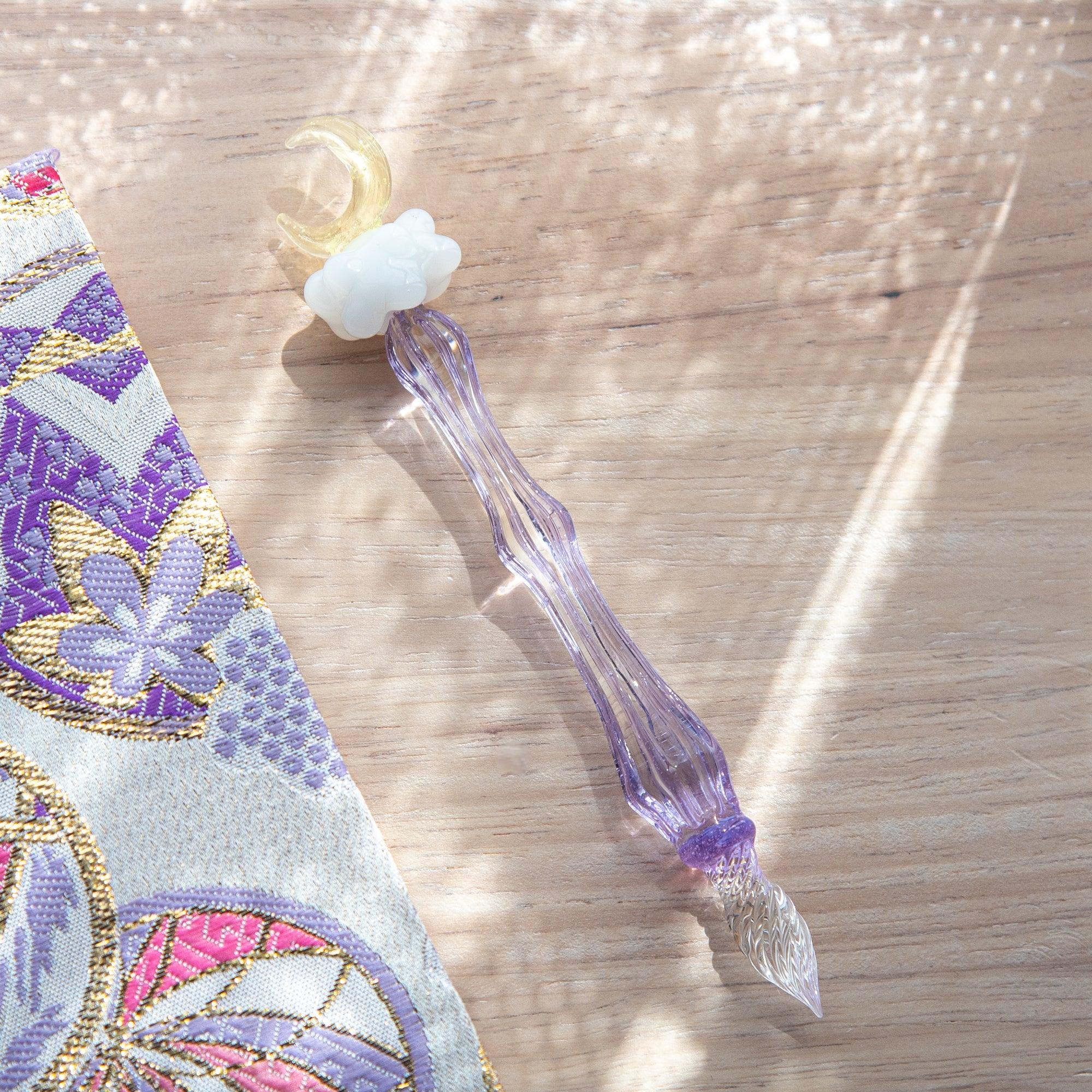







Gold Leaf Sakura Red Pen Tray
Introduce a flourish of Japanese elegance to your workspace with this exquisite red pen tray, graced with the delicate beauty of cherry blossoms in gold leaf. The vibrant red serves as the perfect canvas for the intricate gold sakura, a symbol of renewal and the fleeting nature of life celebrated in Japanese culture.
Crafted carefully, each golden petal catches the light, bringing a luminous quality to your desk. This tray's generous size allows for multiple pens or for you to display a pen alongside its cap, combining practicality with the serene beauty of a cherry blossom viewing, or 'hanami.'
This piece, originally meant for culinary presentation, now finds a new purpose in elevating your writing experience. It's an ideal choice for those who seek to infuse their daily tasks with the poetic charm of traditional Japanese motifs.
Details
- Brand: Hakuichi
- Quantity: 1 pen tray
- Size: 2.3×2.3×0.47inches / 60×60 ×12mm
- Weight: 1.26 oz / 36 g
- Material: Gold Leaf on Resin
- Note: Each piece is uniquely handmade, so expect some individual differences.
Discover Hakuichi's Artistry
 Hakuichi, located in Kanazawa City in Ishikawa Prefecture — where 99% of Japan's gold leaf is produced — has been a pioneering force in gold leaf artistry since 1975. As a leader in this field, Hakuichi has been crucial in popularizing and preserving this traditional Japanese craft globally.
Hakuichi, located in Kanazawa City in Ishikawa Prefecture — where 99% of Japan's gold leaf is produced — has been a pioneering force in gold leaf artistry since 1975. As a leader in this field, Hakuichi has been crucial in popularizing and preserving this traditional Japanese craft globally.
Kanazawa's fame in gold leaf production is deeply rooted in its artisans' exceptional craftsmanship, characterized by precision and perseverance. In the Edo period, when gold beating was restricted outside Edo (Tokyo) and Kyoto, Kanazawa's artisans refined their craft under challenging conditions. This period of adversity ultimately led to the region becoming renowned for its exquisite gold leaf.
With each piece of gold leaf stationery, Hakuichi brings a touch of Kanazawa's elegance to your desk. These products are not merely tools for writing but embody a rich legacy of Japanese artistry. High-quality gold in their stationery transforms every writing experience into a luxurious encounter, making these items highly valued among Japanese traditional crafts and a splendid addition for any stationery enthusiast.
SHIPPING
Most items will be delivered within 3-5 working days of order confirmation, with international shipping available to customers worldwide.
*FREE SHIPPING on purchases over USD 200.
*Shipping costs will be displayed when you add items to your cart.
REFUND
Choose options








ARTISTIC PRODUCTION of GOLD LEAF
Gold leaf is an astonishingly thin material, just 0.1 to 0.2 micrometers thick. Imagine taking approximately 2 grams of gold and spreading it out to cover the size of a single-sized bed; that's how fine gold leaf can be. Achieving such a feat of thinness requires exceptional craftsmanship, the meticulous process of paper layering that's crucial to gold leaf making, and the right climate conditions. Let's take a brief look at the creation process that brings this delicate art to life.
1. Gold Mixing

First, a small amount of silver and copper is mixed with gold. Pure gold (99.99%) is too soft and difficult to spread thinly, so silver and copper are added for pliability.
1. Gold Mixing
The alloy is then rolled into a thin, ribbon-like shape using a rolling machine. Repeated around 20 times, the material is thinned to 0.02-0.03 millimeters and cut into approximately 6 cm squares, referred to as "Koppe."
3. Beating

The Koppe are further thinned by beating them out until they fill a sheet of paper. Once expanded to 12 cm squares, they're called "Aragane." Aragane is then cut into quarter sizes and extended to about 20 cm, becoming "Kojuu." Kojuu are further cut and stretched into "Oojuu." The final product, "Uwazumi," is sandwiched between finishing papers, reaching a thickness of about 0.001 millimeters.
4. Layering

From here, the Uwazumi, already at 0.001 millimeters thick, is cut into smaller pieces, called "Koma." These are carefully layered between special papers for gold beating.
5. Pre-Beating

The gold is fixed with specific skins or materials and beaten with a machine. Once beaten, it's transferred to a primary paper and spread to a thickness of 0.0001 to 0.002 millimeters.
Paper Preparation is crucial in gold leaf making. The quality of Washi (Japanese paper) used between the gold layers significantly impacts the final product's quality. The paper is treated with egg, persimmon tannin, and ash to make it strong enough to withstand beating without tearing.
6. Final Layering

Once beaten, the gold leaf's quality is checked, and each piece is transferred to a "Hiromonocho" (expanding book). Using tools like bamboo chopsticks and Tengu claws that minimize static electricity, this delicate step involves handling the extremely thin gold leaf, vulnerable to the slightest breeze or static.
7. Gold Transfer

In the final step, the gold leaf is trimmed and adjusted to standardized sizes (10.9 cm, 12.7 cm, 15.8 cm, and 21.2 cm squares) using a bamboo frame. The leaf is transferred onto a leather board with bamboo chopsticks, trimmed from all sides using the frame, and finally placed on a cutting paper to complete the process.
This detailed journey from raw materials to delicate gold leaf showcases Hakuichi's dedication to preserving this age-old art form.



